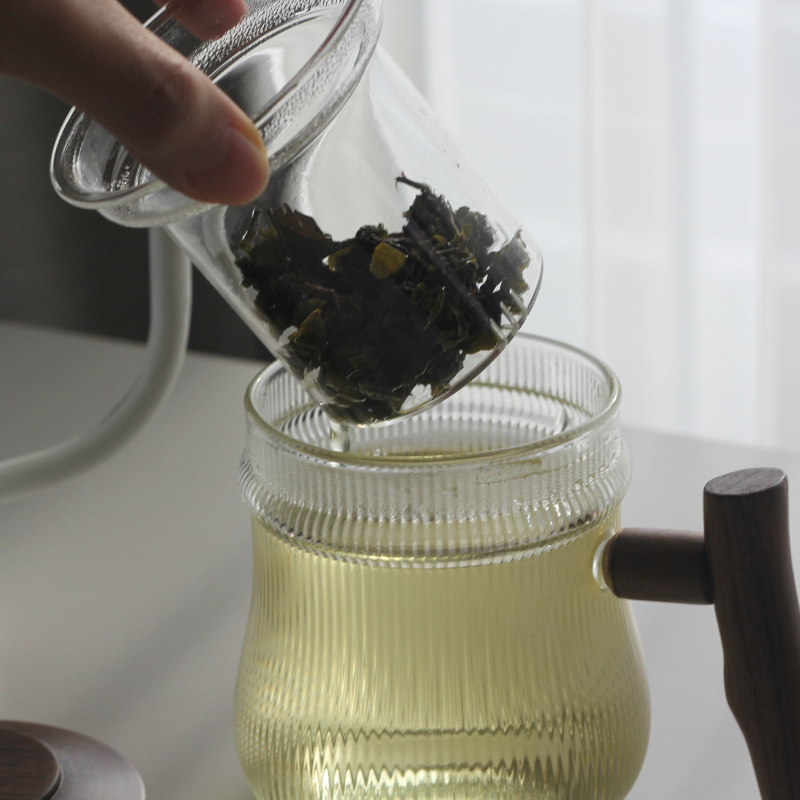SOULFUL RECIPES - Cold Brew Tea!
It's almost June, we can kind of agree that cold tea sounds better than hot.
Is cold brew tea better than adding ice cubes to a pot of hot tea?
I don't know, is cold brew coffee more mellow, fragrant, and sweet without the bitter aftertaste and less caffeinated?
Cold-brewed tea,
made by steeping tea leaves in cold or room-temperature water over an extended period, has recently become popular in modern tea culture.
This method yields tea with significantly less bitterness and astringency, producing a smoother, sweeter flavor that is particularly popular during the summer months. It is already widely enjoyed in convenience stores and specialty tea shops throughout subtropical regions, notably Taiwan.
The reduced bitterness and astringency of cold-brewed tea stem from the lower solubility of polyphenols and caffeine in cold water.
Specifically, epigallocatechin gallate (EGCG), which contributes significantly to astringency, and caffeine, a primary source of bitterness, are less readily extracted at lower temperatures. Conversely, flavor-enhancing compounds such as theanine and epigallocatechin (EGC), which provide sweet and umami notes, are more effectively highlighted in cold brewing.
Astringency in tea occurs when polyphenols bind with proteins in saliva, reducing lubrication and causing a drying sensation. Cold brewing reduces polyphenol extraction, thus decreasing this interaction and resulting in less astringency.
At the same time, sweetness from compounds like theanine is enhanced, providing a balanced and flavorful tea experience that hot brewing may mask.
The flavor profile of cold-brewed tea varies depending on the oxidation level of the tea leaves. Low-oxidation teas, such as green tea and lightly oxidized oolong, offer fresh floral aromas and sweet aftertastes, which are highly favored by consumers.
Fully oxidized black teas produce a distinctive smoothness and aroma, but lightly oxidized teas tend to be more widely preferred.
Where does it come from?
Cold-brewed tea originated in Japan and subsequently flourished in Taiwan. Taiwan's subtropical climate has made cold-brewed tea highly popular, prompting a range of products from bottled beverages to carbonated teas.
Taiwanese high-mountain oolongs, known for their delicate floral aroma and sweetness, have become particularly popular as premium cold-brew options.
Fun fact, Japan and Korea are two of the few countries in the world with abundance of fresh, drinkable spring water. Naturally, people from these countries prefer cold drinks or water instead of hot because they didn't really need to boil water.
Can cold-brew tea be fun?
Sure, cold-brewed tea is ideal for tea cocktails and milk tea preparations.
Its reduced bitterness and astringency allow the tea's flavor and aroma to stand out clearly when mixed with various alcohols, such as brandy, gin, and whiskey. For milk tea, cold brewing offers a smoother, cleaner flavor profile compared to traditional hot-brew methods, enhancing the natural harmony between tea and milk.
Recent developments in cold-brew technology aim to improve production efficiency and hygiene.
Ultrasonic extraction and high-pressure processing technologies are gaining commercial attention due to their ability to produce high-quality cold-brewed tea more quickly. Non-thermal sterilization techniques, such as ultrasonic and high-pressure sterilization, are also being researched to manage microbial safety effectively.
In conclusion, cold-brewed tea offers a distinct taste and aroma, revolutionizing contemporary tea culture.
By gently extracting the subtle flavors inherent in tea leaves, this brewing method not only enhances taste but also offers various health benefits. Given these advantages, cold-brewed tea is expected to grow increasingly popular.
How to prepare cold-brew tea
Just take 1:100 ratio for tea and room temperature or colder water, and leave the drink in the fridge for up to 2 days for maximum flavor.
You can also speed things up by leaving the steep room temperature for a couple of hours before putting into the fridge.
You can play with the ratio, make it 1:50 or 1:200 depending on how strong you like your tea. At our household, we serve 1:50 ratio room temp cold-brew in a bunch of ice to our guests so they can have delicious tasting tea throughout their evening.
Yes, evening, because it doesn't have caffeine!






![TEA JOURNEY [13] | Tea Tasting Terminology](http://tingeofsoul.com/cdn/shop/articles/IMG_3072.jpg?v=1686898175&width=1080)
Leave a comment